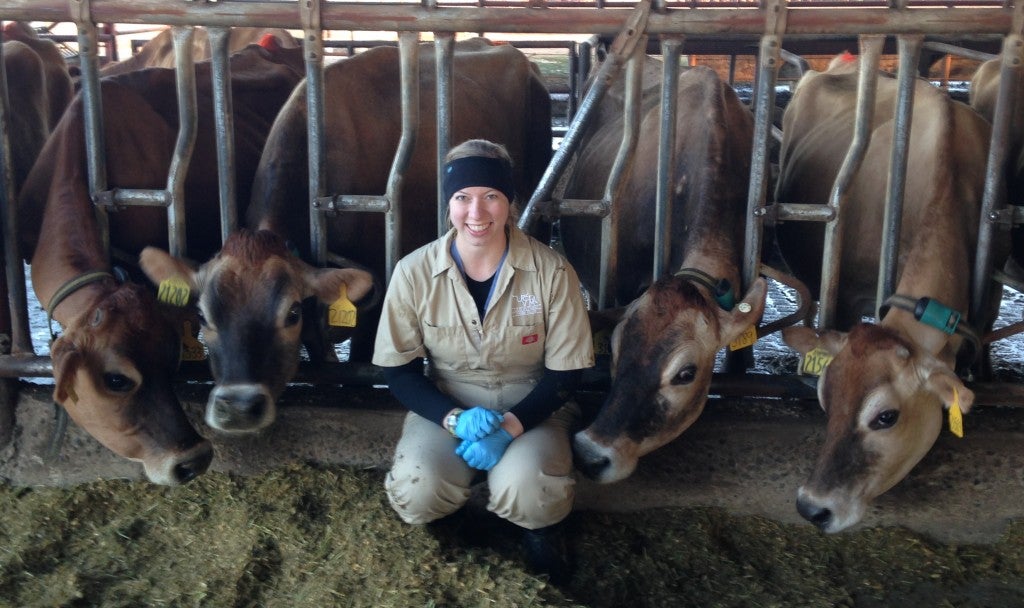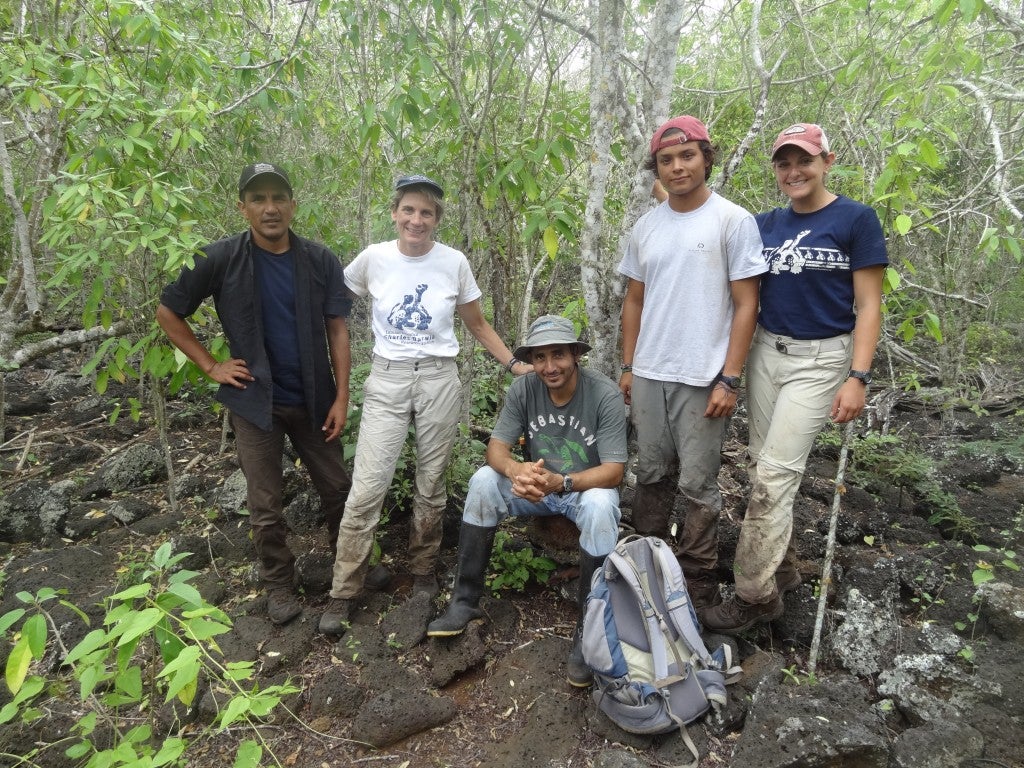By Monique Garcia Gunther
 When Michelle Schack was seven years old, she was dissecting squirrels. At 17, she helped raise nine guide dogs. In college, as an undergraduate resident manager of an animal sciences barn, she lived with pigs for two years. Today, in her final year of DVM training at the UC Davis School of Veterinary Medicine, you’ll find Michelle outdoors working on a dairy farm diagnosing cattle pregnancies or treating a sick cow, as part of a rotation in dairy production medicine.
When Michelle Schack was seven years old, she was dissecting squirrels. At 17, she helped raise nine guide dogs. In college, as an undergraduate resident manager of an animal sciences barn, she lived with pigs for two years. Today, in her final year of DVM training at the UC Davis School of Veterinary Medicine, you’ll find Michelle outdoors working on a dairy farm diagnosing cattle pregnancies or treating a sick cow, as part of a rotation in dairy production medicine.
A city girl drawn to the farm
You might think Michelle grew up on a farm. Instead, she was raised in the traffic-filled suburbs of the San Francisco Bay Area where 4-H Clubs were hard to come by.
From an early age, Michelle said she knew she wanted to be a veterinarian and sought out opportunities to work with animals. But she was keenly aware that becoming a veterinarian involved more than a love for animals. While she owned dogs, a tortoise, a bunny and a bird as pets, she also possessed an inquiring mind, a strong sciences and math skill set and good communication skills. When she reached high school, she took anatomy and physiology to prepare for college. Continue reading

